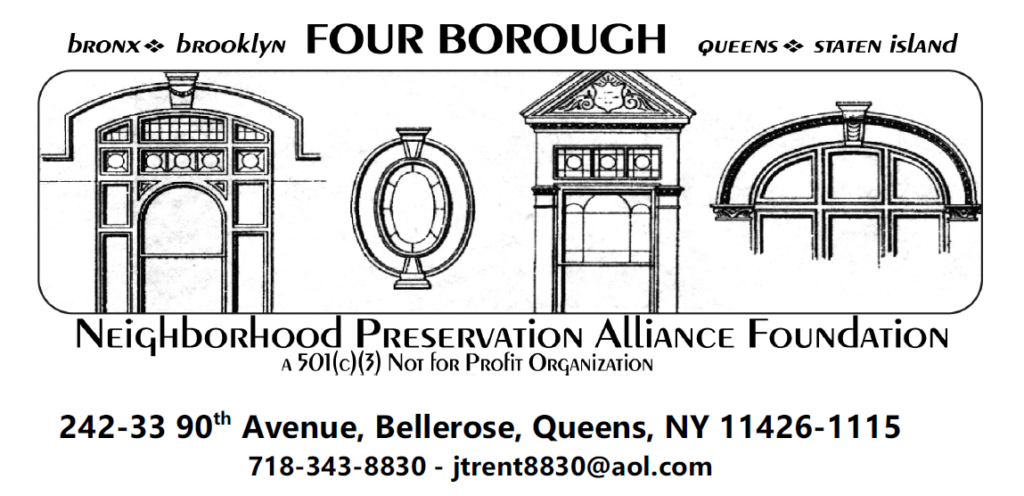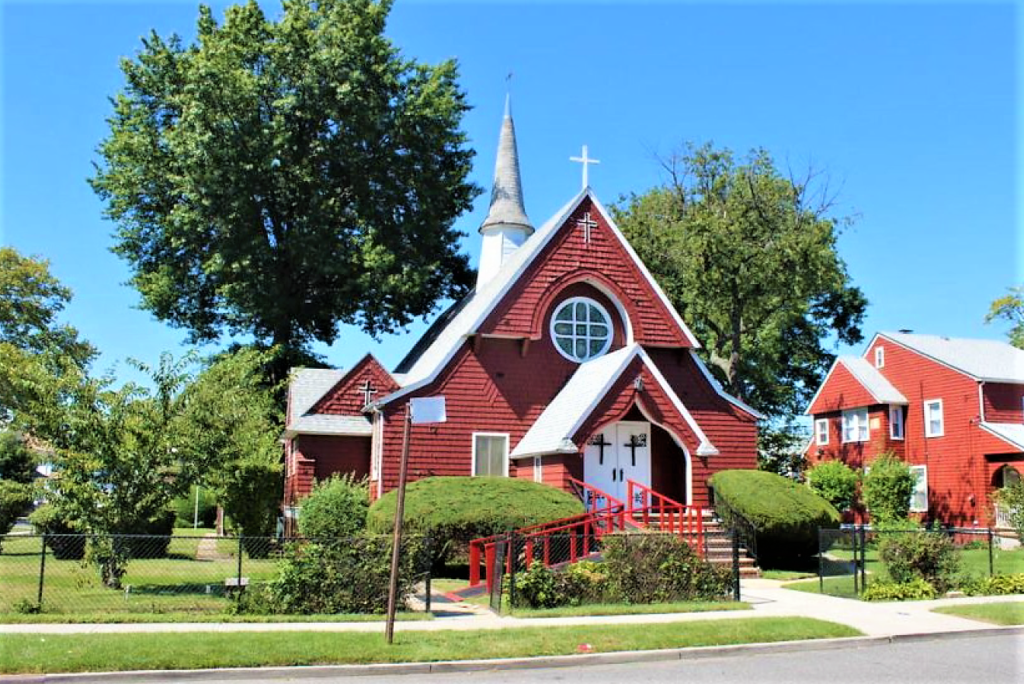
July 2, 2021
Kate Lemos McHale, Director of Research
NYC Landmarks Preservation Commission
One Centre Street, 9th Floor – North
New York, NY 10007
Re: St. Joseph’s Episcopal Church
217-45 100th Avenue, Queens Village
Dear Ms McHale:
We write to urge speedy action on the Request for Evaluation submitted by Rene C. Hill to landmark
the complex of buildings in Queens Village known as St. Joseph’s Episcopal Church. This set of
mostly wood-frame, wood shingled buildings built cohesively over a period of almost 100 years and
situated on a rural-looking large block of land is too precious to lose, but is currently threatened with
demolition.
The number of wooden churches in Queens has been shrinking and St. Joseph’s represents a
particularly important example of such rural architecture and happily sits on its original large lot,
actually an entire city block. The rectory, parish hall, and cloister are sensitively designed accessory
buildings that add charm and history to a neighborhood otherwise sadly lacking in both. This large
open space evokes past times when a religious or civic edifice was placed in a square to be the focal
point of a city, town, or village. Here is a rare example, perhaps a unique example, of a country
church square surrounded by a tight, suburban-style development. This park-like setting is stunning
and is perhaps not replicated anywhere else in New York City.
The buildings, as has been pointed out in the RFE, are commissions from notable architectural firms
of the late 19th and early 20th centuries. There is an opportunity for some kind of development at the
western portion of the property that would permit the designation of the important buildings on the
eastern portion of the triangular block that would afford income to keep the parish financially viable.
Arguments that the buildings are beyond repair and that ALL of them need to be demolished are
bogus. Financial aid for repairs can be secured from the Sacred Sites program of the New York
Landmarks Conservancy.
Eastern Queens has little inventory of landmarked buildings, and this complex is too beautiful, too
rare, and too historic to lose. This parish is over 150 years old (founded in 1870). There are still
parishioners who want to keep their existing church and believe it’s viability can be assured going
forward.
We urge the quick calendaring of this property. There is little time to spare.
Sincerely,
James A. Trent
President






